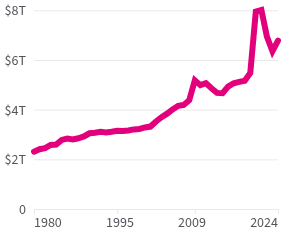What are congressional appropriations (spending) bills and how are they approved?
Appropriation bills are proposed laws, put forth by 12 subcommittees, that authorize different government agencies to spend money.
Appropriations bills are proposed laws that authorize agencies of the federal government of the United States to spend money. Appropriations bills may be for definite or indefinite sums. Each fiscal year, Congress passes 12 appropriations bills and supplemental appropriation acts to fund government operations.
There are several kinds of appropriations:
- Annual appropriations
- Multi-year appropriations
- Revolving funds
- Expired appropriations
- Canceled appropriations

What are the 12 types of appropriations bills?
There are 12 appropriations subcommittees. Each one produces an appropriations bill annually. Often, the dozen bills are combined and referred to as an omnibus appropriations bill.
The 12 subcommittees that produce appropriations bills include:
- Transportation, Housing and Urban Development, And Related Agencies
- State, Foreign Operations, And Related Programs
- Military Construction, Veterans Affairs, And Related Agencies
- Legislative Branch
- Labor, Health and Human Services, Education
- Interior, Environment, And Related Agencies
- Homeland Security
- Financial Services and General Government
- Energy and Water Development and Related Agencies
- Defense
- Commerce, Justice, Science and Related Agencies
- Agriculture, Rural Development, Food and Drug Administration
How are appropriations bills approved?
The appropriations bill approval office is a lengthy one. Each fiscal year the president, via the White House Office of Management and Budget, submits a budget request to Congress.
Each chamber of Congress then responds with the creation of a budget resolution. Once approved, budget resolutions move on to the appropriation committees in the House and the Senate.
Visit our government spending hub to get the latest information on federal spending and get fresh data delivered weekly by signing up for our newsletter.